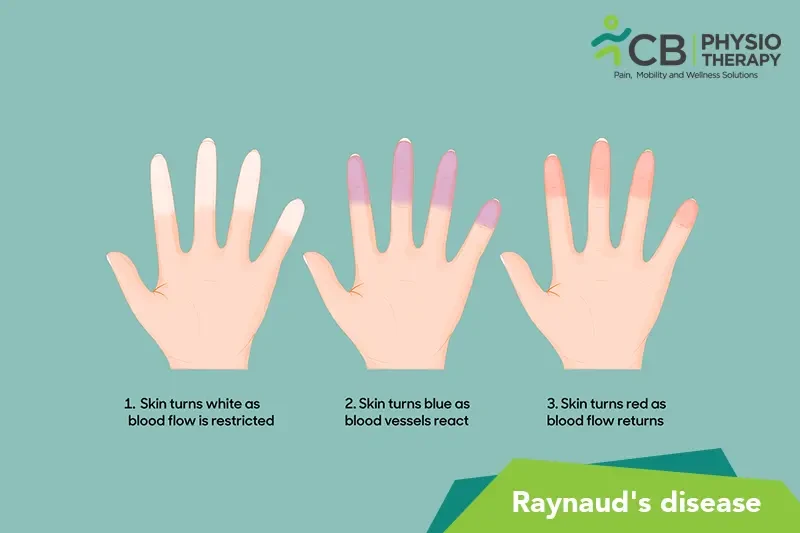The exact cause of Raynaud's disease is not known, but it is thought to be related to the abnormal narrowing of blood vessels in response to certain triggers, such as:
- Cold temperatures.
- Emotional stress.
- Associated with a medical condition, such as autoimmune disorders like lupus or scleroderma, or certain medications.
PathologyRaynaud's disease is a disorder of the small blood vessels in the extremities, such as the fingers, toes, ears, and nose. The underlying pathology involves abnormal spasms of the blood vessels in response to certain triggers, such as cold temperature, stress, or emotional stimuli. This spasm causes a decrease in blood flow to the affected area, which can result in a range of symptoms.
During Raynaud's episode, the blood vessels in the affected area constrict, reducing the flow of oxygen and nutrients to the surrounding tissues. This can cause the skin in the affected area to turn white or blue, as well as cause pain, numbness, or tingling sensations. As the blood vessels relax, blood flow returns to the affected area, often causing a sensation of warmth and redness.
Over time, repeated episodes of Raynaud's can lead to tissue damage and even ulceration in severe cases. In some people, Raynaud's may be associated with an underlying medical condition, such as autoimmune disorders like lupus or scleroderma, which can further damage the blood vessels and worsen symptoms.
